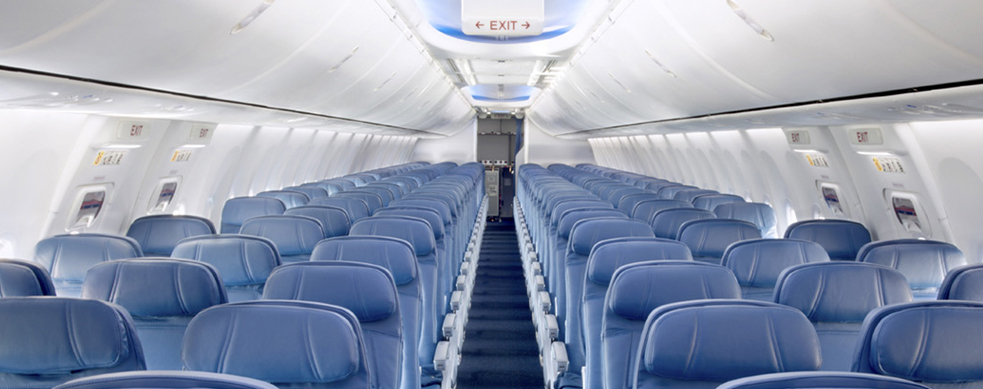
The Importance of Using Ozone in Aircraft
While the aviation sector is trying to maximize passenger safety and comfort with constantly developing technologies, improving air quality has also become an important issue. Especially in terms of the health, safety and comfort of passengers and crew in aircraft, regulating indoor air quality is of critical importance. In recent years, the use of ozone has emerged as an important solution to improve in-flight air quality.
Ozone (O₃) is a gas formed by the combination of three oxygen atoms and has strong oxidizing properties. Ozone is known for its strong effects, especially in the areas of air purification and disinfection. The use of ozone in aircraft provides many benefits such as cleaning the interior, eliminating pollutants in the air, eliminating bad odors and killing microorganisms.
Improving Air Quality in Aircraft
Aircraft circulate air to provide fresh air to passengers while flying at high altitudes. However, this circulation is usually provided by aircraft engines or air filtration systems. From time to time, airborne pollutants, allergens and microbes can accumulate in air ducts, threatening the health of passengers. Ozone cleans harmful substances in the air by oxidizing them and eliminates the effects of these substances.
The use of ozone on airplanes is especially important for passengers to breathe comfortably and breathe cleaner air. The strong oxidizing feature of ozone quickly destroys harmful microorganisms, viruses, bacteria and mold spores in the air. In this way, cleaner and fresher air is provided inside the aircraft. In addition, ozone eliminates bad odors in the air and keeps the air fresh.
Elimination of Microorganisms
Airplanes are environments where passengers and crew spend long periods of time in closed areas. For this reason, air quality inside the aircraft plays a critical role in terms of health. Ozone is a powerful disinfectant that kills microorganisms in the air and on surfaces. Viruses, bacteria and fungi in particular have the potential to threaten the health of passengers on airplanes.
Ozone destroys these microorganisms by oxidizing them. The use of ozone in aircraft cabins reduces the risk of infection for passengers and crew and creates a healthier environment. For example, preventing the spread of epidemics on aircraft has become even more important, especially during pandemic periods. The use of ozone prevents the spread of viruses and bacteria and provides a healthy flight environment.
Elimination of Bad Odors
Bad odors can occur on aircraft, especially on long-haul flights, due to factors such as the seats passengers sit on, food, drinks and sweat. These bad odors negatively affect the comfort of passengers and disrupt the flight experience. Ozone has a feature that effectively eliminates these bad odors. Ozone oxidizes odor molecules and renders them harmless. Thus, unwanted odors formed inside the aircraft are quickly eliminated and a fresh environment is provided.
Improvement of Ventilation and Air Circulation
Air circulation and ventilation inside the aircraft are important factors for the health of passengers. However, ventilation systems used in aircraft cannot always improve air quality sufficiently. Ozone can be integrated into ventilation systems and significantly increase the quality of air inside the aircraft. Ozone cleans the air by oxidizing pollutants in the air and also prevents the reproduction of microorganisms in the ventilation system.
Ozone generators can work as part of the ventilation system in airplanes and provide cleaner air to passengers by improving air circulation in the cabin. This is an important advantage especially on long flights. Thanks to ozone, passengers can constantly breathe clean and hygienic air.
Removing Allergens
Allergens found on airplanes can affect the health of passengers. Allergens such as dust, pollen, mold spores can cause discomfort especially for people with sensitive bodies. Ozone oxidizes and eliminates allergens in the air and creates a healthier environment inside the aircraft. This is a great advantage especially for passengers with allergies.
Cleaning allergens improves the air quality inside the aircraft and allows passengers to have a comfortable flight experience. Ozone helps eliminate these allergens and provides a healthy flight environment.
Environmentally Friendly and Economical Solution
Using ozone on airplanes offers an environmentally friendly solution. Unlike chemical cleaners, ozone is a natural disinfectant and does not contain harmful chemicals. In addition, ozone generators operate with low energy consumption to improve air quality inside the airplane, which offers an economical solution. Using ozone instead of chemical disinfectants during the cleaning phase reduces aircraft maintenance costs and reduces negative effects on the environment.
Using ozone on airplanes improves air quality It provides important benefits such as protecting the health of passengers, eliminating bad odors, killing microorganisms and cleaning allergens. Ozone increases the air quality inside the aircraft, allowing passengers to have a healthier and more comfortable flight experience. In addition, the environmentally friendly and economical features of ozone offer a great advantage in terms of sustainability in the aviation sector. The use of ozone in aircraft, as an important part of modern aviation, offers an effective solution that increases the health and comfort of both passengers and crew.
İlker KURAN
Alperen Mühendislik Ltd. Şti.







